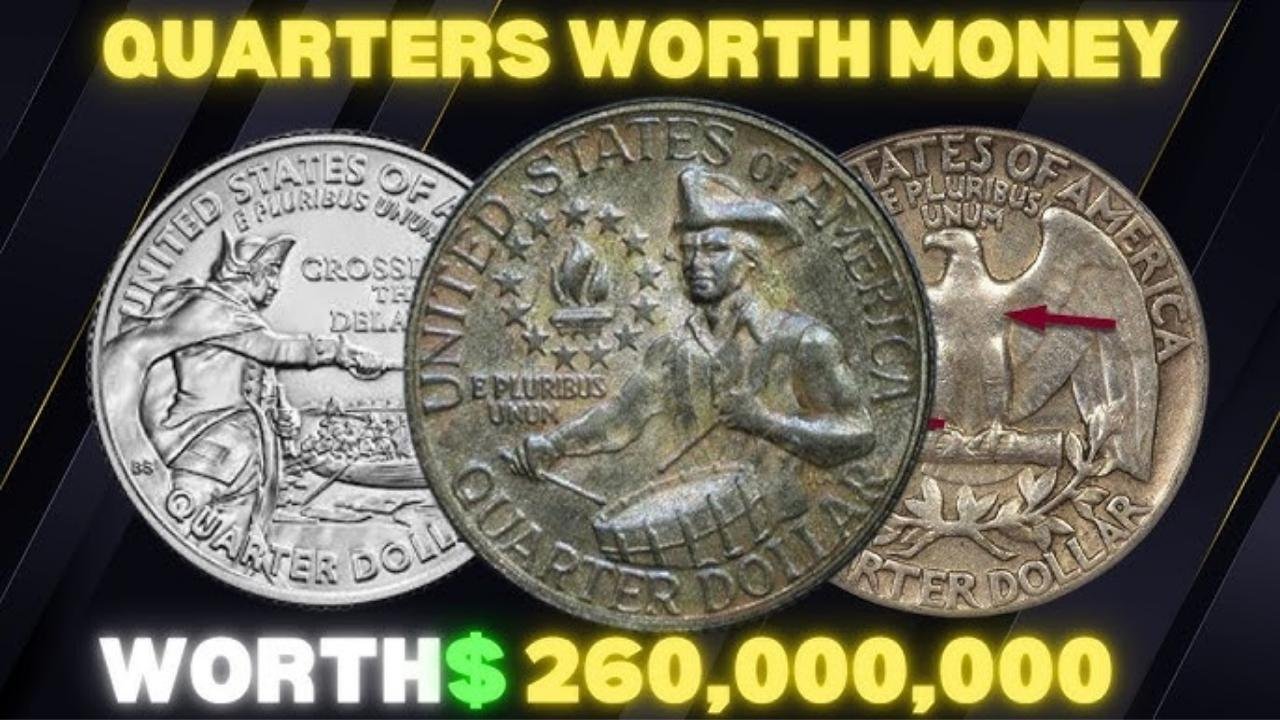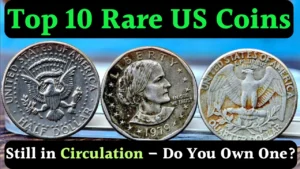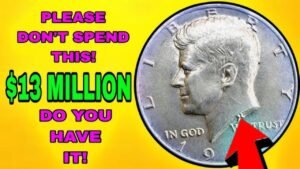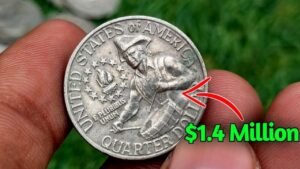Imagine finding a quarter in your pocket that’s worth more than a luxury mansion—or even a small country’s economy. That’s the incredible story of the 1976 Bicentennial Quarter, a coin minted to celebrate America’s 200th birthday.
While most of these quarters are worth just 25 cents, a rare version with a unique minting error recently sold for a staggering $2.5 billion at a private auction in 2025. Yes, you read that right—billion! The best part? These coins might still be hiding in your change jar or piggy bank. Let’s dive into what makes this coin so valuable and how you can spot one.
Why Is the 1976 Bicentennial Quarter So Valuable?
The 1976 Bicentennial Quarter was created to mark 200 years of American independence, featuring a special design with George Washington on the front and a colonial drummer on the back. Most of these quarters were made with a copper-nickel blend, but a select few from the San Francisco Mint contain 40% silver, adding to their allure.
What sets the $2.5 billion quarter apart, though, is a rare minting mistake called a doubled die error. This happens when the coin’s design is stamped twice, slightly off-center, creating a blurry or shadowed effect on George Washington’s portrait. Combine this with its silver content and historical significance, and you’ve got a collector’s dream.
Key Features of the $2.5 Billion Quarter
Not all 1976 Bicentennial Quarters are worth billions, but the rare ones have distinct characteristics. Here’s a quick breakdown of what to look for:
| Feature | Details |
|---|---|
| Year | 1976 (dual date “1776-1976”) |
| Mint | San Francisco (“S” mint mark) |
| Error | Doubled Die Obverse (blurry portrait) |
| Composition | 40% Silver, 60% Copper |
| Estimated Value | Up to $2.5 billion (rare cases) |
These coins were struck at the San Francisco Mint, and only a tiny number have the doubled die error, making them exceptionally rare. The $2.5 billion sale in 2025 sent shockwaves through the coin-collecting world, proving just how valuable these errors can be.
How to Spot a Rare 1976 Bicentennial Quarter
Think you might have one of these treasures? Here’s how to check your quarters like a pro:
1. Look for the “S” Mint Mark
The San Francisco Mint produced the valuable silver versions, marked with a small “S” under George Washington’s neck. If your quarter has no mint mark, it’s likely from Philadelphia and less valuable unless it has a rare error.
2. Check for the Doubled Die Error
Grab a magnifying glass and examine Washington’s portrait. Look for doubling or blurriness around the eyes, hairline, or the words “LIBERTY” and “IN GOD WE TRUST.” Compare it to a regular quarter to spot differences.
3. Weigh the Coin
Silver quarters weigh slightly more (5.75 grams) than standard copper-nickel ones (5.67 grams). Use a precise scale to check the weight.
4. Inspect the Shine
Silver quarters have a distinct, shiny appearance compared to the duller copper-nickel versions. If it looks unusually bright or has a unique tone, it might be a silver coin.
5. Never Clean Your Coin
Cleaning can damage the surface and drastically reduce its value. Store it in a soft plastic holder and consult a professional grader like PCGS or NGC for authentication.
Understanding Coin Grading
The value of a coin depends heavily on its condition. Here’s a simple guide to coin grading:
| Grade | Description |
|---|---|
| Poor | Worn out, barely recognizable |
| Good | Readable but shows moderate wear |
| Fine | Clear details with light wear |
| Mint | Nearly flawless, no visible wear |
A coin in “Mint” condition (MS67 or higher) with a doubled die error could be worth thousands or even millions, depending on its rarity.
Could It Be Hiding in Your Pocket?
The thrill of finding a rare Bicentennial Quarter is real because these coins are still in circulation. People have discovered valuable coins in vending machines, tip jars, or old family collections. Social media platforms like Reddit and numismatic forums are buzzing with stories of collectors finding rare quarters in unexpected places. With over 1.6 billion Bicentennial Quarters minted, the odds of finding a rare one are slim—but not impossible.
What to Do If You Find a Rare Quarter
If you think you’ve found a valuable 1976 Bicentennial Quarter, follow these steps:
- Handle with Care: Use gloves to avoid oils from your skin damaging the coin.
- Store Safely: Place it in a protective plastic holder.
- Get It Graded: Contact a reputable grading service like PCGS or NGC to verify authenticity and condition.
- Research Auction Records: Check recent sales of similar coins to estimate value.
- Sell Strategically: Auction houses, coin dealers, or online platforms like eBay are great places to sell, but ensure the coin is graded first.
The Excitement of Coin Collecting
The $2.5 billion sale has sparked a modern-day treasure hunt. Coin clubs across the country are hosting events, and collectors are sharing tips on social media. Even if you don’t find the billion-dollar quarter, other rare Bicentennial Quarters with errors or high grades can still fetch hundreds or thousands of dollars. The 1976 Bicentennial Quarter isn’t just a coin—it’s a piece of American history that could change your life.
FAQs About the 1976 Bicentennial Quarter
What makes the 1976 Bicentennial Quarter so valuable?
The rarest versions have a doubled die error, 40% silver composition, and were minted in San Francisco. These factors, combined with high-grade condition, drive their value.
How can I tell if my quarter is silver?
Check for an “S” mint mark and weigh the coin. Silver quarters weigh 5.75 grams and have a shinier appearance than copper-nickel ones.
Where can I get my coin appraised?
Visit a local coin shop or contact professional grading services like PCGS or NGC for an accurate appraisal.
Are all 1976 Bicentennial Quarters valuable?
No, most are worth only 25 cents. Only those with rare errors, silver content, or pristine condition are valuable.
Can I still find these quarters in circulation?
Yes, some rare quarters may still be in pocket change, old collections, or coin rolls, though they’re increasingly rare.
So, next time you’re sorting through loose change, take a closer look at those 1976 quarters. You might just uncover a hidden fortune!




